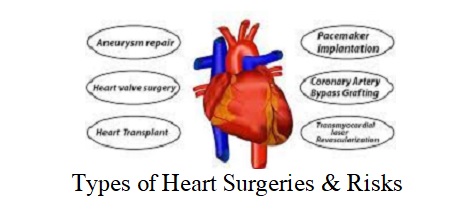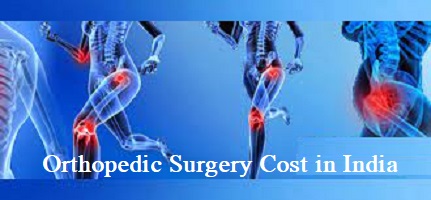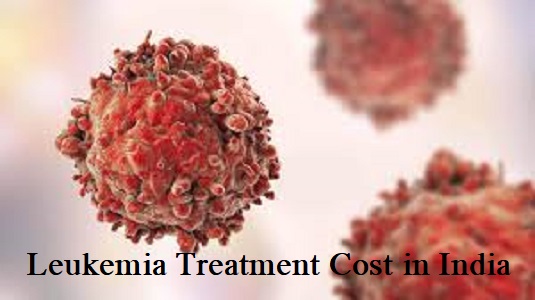Uterine Cancer (Endometrial Cancer) – Types, Symptoms, Causes, Diagnosis. Treatment & Cost
Uterine cancer, commonly known as endometrial cancer, is a common cancer of the female reproductive system, with an incidence of 4.3 per 100,000 women, indicating a relatively low occurrence. It begins in the endometrium, the uterine lining where fetal development occurs throughout pregnancy. The uterus is made up of two parts: the body and the cervix, with the endometrium changing continually in response to hormones during the menstrual cycle. You will get details about uterine cancer treatment, cost, causes, types, etc.
Endometrial cancer is the most common kind of uterine cancer, accounting for almost 95% of all occurrences. The uterus plays a crucial role during pregnancy, as the endometrium changes hormonally to support embryo growth. Despite its widespread nature, statistics show that patients have a good prognosis, with 90% surviving at least one year after diagnosis, 75% surviving for at least five years, and over 70% surviving for ten years. So Uterine cancer treatment is required as soon as possible to live long.
What are the different types of Uterine Cancer?
The different types of uterine cancer are:
- Adenocarcinoma (Endometrioid Cancer): Adenocarcinoma is the most common type of uterine cancer, which accounts for a large percentage of cases. It develops from gland cells and resembles the normal uterine lining (endometrium). Subtypes include squamous adenocarcinoma, adenoacanthoma, adenosquamous, secretory carcinoma, ciliated carcinoma, and villoglandular adenocarcinoma.
- Aggressive Variants:
- Uterine Papillary Serous Carcinoma: This rare type of endometrial cancer begins in the uterine lining and tends to return even when detected early.
- Uterine Clear Cell Carcinoma: This rare subtype accounts for fewer than 5% of cases and has different characteristics.
- Uterine Carcinosarcoma: Representing less than 5% of cases, carcinosarcoma is a particularly aggressive variation with characteristics of both adenocarcinoma and sarcoma.
What are the Signs and Symptoms of Uterine Cancer?
Some of the symptoms of Uterine Cancer are:
Abnormal Vaginal Bleeding: Abnormal vaginal bleeding affects more than 90% of women diagnosed with endometrial cancer.
- Bleeding between menstrual cycles before menopause.
- Postmenopausal bleeding
- Vaginal bleeding that is extremely long, heavy, or common after the age of 40.
Pelvic discomfort:
- Lower abdominal pain or cramping right below the belly button.
- Pain during intercourse.
Other symptoms:
- In postmenopausal women, vaginal discharge is thin and transparent.
- Difficulty or pain in Urination.
- The presence of a pelvic mass.
- Obesity has been associated with a higher risk of uterine cancer.
What are the Causes of Uterine Cancer?
Some of the causes of uterine cancer are:
- Cellular DNA Alterations: Although the exact cause of endometrial cancer is unknown, researchers know that changes occur in the DNA of cells within the uterine lining (endometrium). These alterations cause the cells to grow rapidly, challenging the usual life cycle and potentially creating a tumor. In rare situations, these abnormal cells may attack healthy tissue around them and eventually break free which may spread to other body parts.
- Hormonal Imbalance and Risk Factors: While its exact cause is unknown, several risk factors are strongly linked to uterine cancer. Obesity and hormonal imbalances, especially an excess level of estrogen, are associated with an increased risk. Most endometrial cancer cells include estrogen or progesterone receptors, and the interaction of these receptors and hormones can result in abnormal endometrium expansion which may potentially lead to cancer.
- Factors Associated with Estrogen:
- Progesterone replacement therapy without estrogen.
- Endometrial polyps history.
- Periods that are irregular or non-existent.
- Obesity influences hormonal imbalance.
- Diabetes and polycystic ovarian syndrome (PCOS)
- Early menstruation (before the age of 12) or late menopause (beyond the age of 50).
- Age and Hormonal Influence: Endometrial cancer is most often found between the ages of 60 and 70, with estrogen’s role contributing to abnormal overgrowth and cancer.
What are the risk factors associated with Uterine Cancer?
Endometrial cancer is influenced by many risk factors that lead to its development. Recognizing those warning signs can help identify people who are at a higher risk. Some of the major risk factors for uterine cancer are:
- Hormonal Imbalance: Changes in hormone balance, particularly estrogen and progesterone, play an important part in the development of endometrial cancer. Obesity, diabetes, and irregular ovulation patterns, as found in polycystic ovarian syndrome (PCOS), can increase the risk by increasing estrogen levels without increasing progesterone levels.
- Age, Lifestyle, and Family History: Increasing age is a major risk factor, with the majority of cases occurring after the age of 50. A family history of endometrial, ovarian, or colon cancer can increase the risk, especially in the context of hereditary nonpolyposis colorectal cancer (HNPCC or Lynch syndrome).
- Reproductive History: Early menstruation (before the age of 12) and late menopause lead to an increased risk by exposing the endometrium to estrogen for a longer time. When compared to women who have had at least one pregnancy, nulliparity, or never having been pregnant, is connected with a higher risk.
- Obesity: Obesity is a major risk factor for endometrial cancer. Excess body fat may affect hormone balance, particularly estrogen levels, contributing to the development of cancer.
- Hormone Therapy: Using hormone therapy after menopause, specifically estrogen replacement therapy without progesterone, increases the risk of endometrial cancer.
- Certain Medical Conditions and Treatments: Diabetes, which is often linked with obesity, may raise the risk of endometrial cancer. Tamoxifen treatment for breast cancer can increase the chance of endometrial cancer.
- Genetic Factors: Lynch syndrome, a hereditary genetic illness associated with abnormalities in specific genes such as MLH1, MSH2, and others, significantly raises the risk of endometrial cancer.
- Breast or Ovarian Cancer History: Because some risk factors overlap, a personal history of breast or ovarian cancer could indicate an increased risk of endometrial cancer.
- Endometrial Hyperplasia: If left untreated, endometrial hyperplasia, especially when atypical, increases the chance of developing endometrial cancer.
- Diet and Lifestyle: A high-fat diet, which can contribute to obesity, has been linked to an increased risk of endometrial cancer. Physical inactivity may contribute to an increased risk.
What is the diagnosis for Uterine Cancer in India?
Diagnosis is the first step for Uterine cancer treatment. Uterine cancer in India is diagnosed using a structured approach that combines medical history assessments, physical examinations, and modern diagnostic procedures.
Physical Exam: A thorough physical examination, including an internal pelvic exam, helps in evaluating the reproductive organs. The doctor or nurse looks for any abnormalities in the uterus and surrounding structures, noting any changes in size, shape, or texture.
You can contact us for Uterine cancer treatment anytime 24×7.
Contact Form
Attach Medical Report
Top Doctors & Surgeons in India
Why Choose Us

Personalized Care
24x7 Supports
Top NABH and JCI accredited Hospitals
Free Cost Estimation & Medical Opinion from Specialist
Get Free Tele/Video Consultation
Visa and Traveling Assistance
Post-surgery with Assistance in Follow-ups














